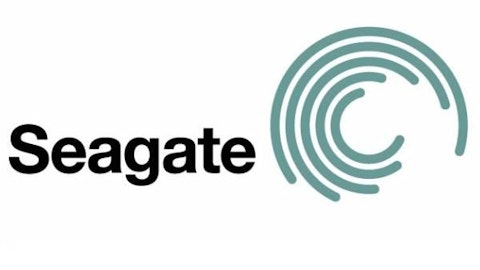Western Digital Corp (NASDAQ:WDC)’s decision to purchase rival hard drive maker STEC, Inc. (NASDAQ:STEC) did not come as much of a surprise to those familiar with the two companies. In light of a recent insider trading scandal and ongoing turmoil within the company’s upper management ranks, many observers believed that it was only a matter of time before STEC, Inc. (NASDAQ:STEC) accepted such an offer. Indeed, the company’s largest institutional shareholder had aggressively pushed for a buyout for over a year.

Despite its troubles, STEC, Inc. (NASDAQ:STEC) appears to offer significant value for Western Digital Corp (NASDAQ:WDC). The company’s solid-state hard drives are crucial to the operations of data-hungry tech firms and larger conventional businesses, and its operations overlap with those of Western Digital Corp (NASDAQ:WDC) in key areas. Arbitrageurs and short-term traders might find something to like in this transaction as well. On the other hand, Western Digital Corp (NASDAQ:WDC) will have to work hard to integrate STEC, Inc. (NASDAQ:STEC)’s under-performing segments into its operations. Investors should keep a close eye on this situation.
Western Digital Corp (NASDAQ:WDC), STEC, Inc. (NASDAQ:STEC) and Competitors
When it is compared to many of its competitors, STEC, Inc. (NASDAQ:STEC) looks like a runt. Unfortunately, it must contend with a number of rather large, diversified firms that operate within its niche. In addition to Western Digital Corp (NASDAQ:WDC), the company directly competes with Seagate Technology PLC (NASDAQ:STX) .
Seagate Technology PLC (NASDAQ:STX) and Western Digital are roughly equivalent in size. Whereas the former has a market capitalization of about $15.8 billion, the latter is valued at around $14.4 billion. By comparison, STEC has a market cap of barely $320 million. In 2012, the two larger companies enjoyed healthy revenues and profits. Western Digital finished the year with a gross take of $16.4 billion and a final profit of about $2 billion. With revenues of $15.4 billion and earnings of about $2.5 billion, Seagate Technology PLC (NASDAQ:STX) had a slightly more robust profit margin. Meanwhile, STEC reported a crushing loss of $118 million on total revenues of $140 million. It should be noted that STEC’s revenue fell by about 50 percent in the first quarter of 2013.
Although STEC lacks long-term debt, its cash reserve of about $130 million is shrinking at a rate of $44 million per year. Cash flows for Western Digital and Seagate Technology PLC (NASDAQ:STX) are robustly positive, and neither company has significantly more debt than cash. However, Seagate Technology PLC (NASDAQ:STX) is considerably more expensive than Western Digital: Its price-to-book ratio of 4.64 is nearly triple that of its California-based competitor. Meanwhile, STEC’s price-to-book ratio of 1.56 is artificially inflated by Western Digital’s offer.
How the Deal Is Structured
According to both parties to the deal, the merger will be structured as a cash-for-stock transaction. Western Digital will issue cash payments of $6.85 per share to STEC shareholders of record on a yet-to-be-determined date. Relative to STEC’s current share price of about $6.75, this represents a premium of 1.5 percent. As such, there is a small but persistent arbitrage opportunity available to interested investors. All told, the deal is worth about $340 million and should close by the end of 2013.
Potential Synergies and Benefits
Despite its lopsided nature, this deal is widely viewed as a near-necessity for Western Digital. With the rise of mobile technology and the shrinking of the consumer-driven PC and laptop markets, demand for traditional hard drives has cratered. Although they remain quite large by most standards, companies like Western Digital and Seagate must contend with stagnant or falling revenues and changing demand profiles. STEC manufactures the powerful solid-state drives that businesses and institutional clients will continue to require for the foreseeable future.

